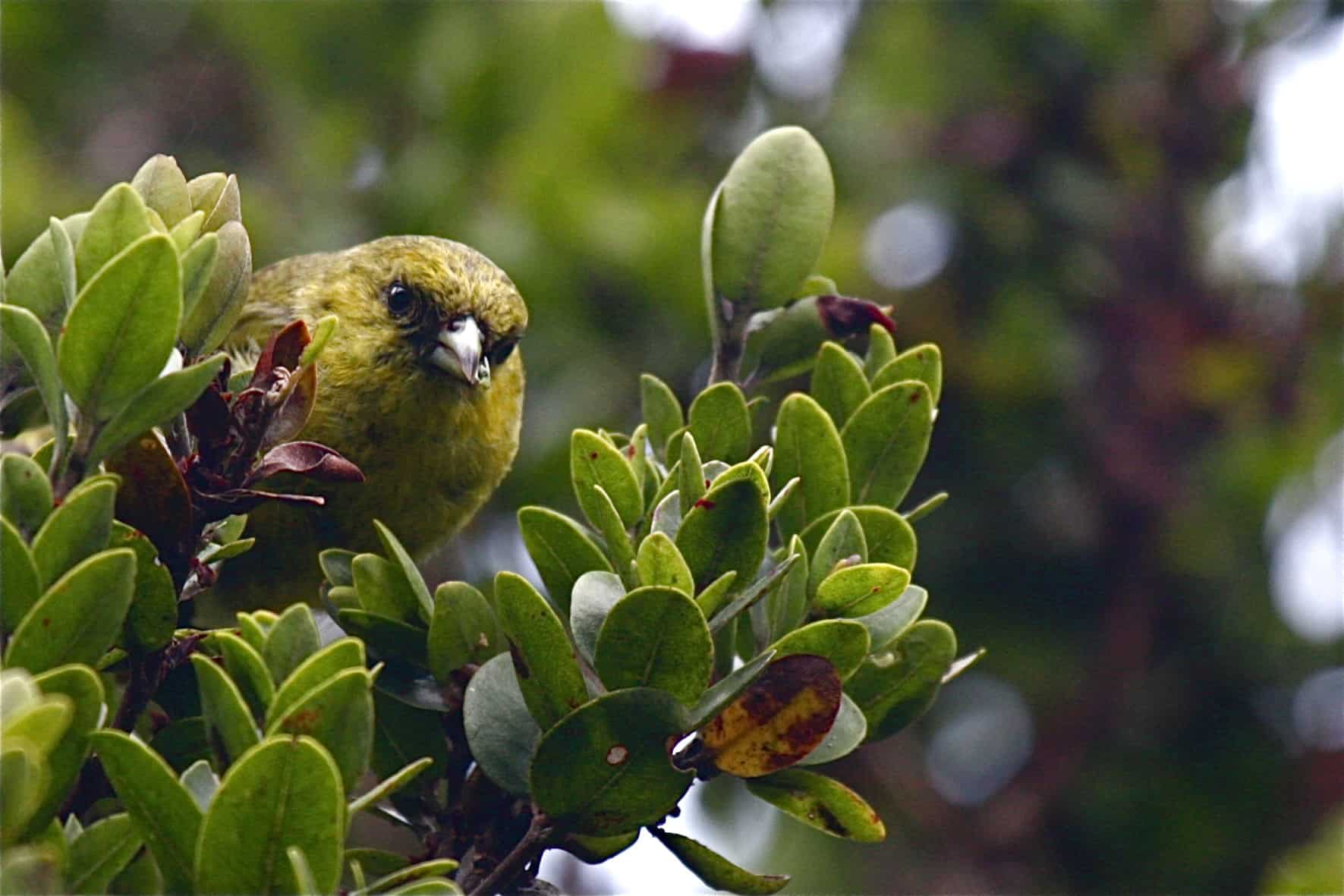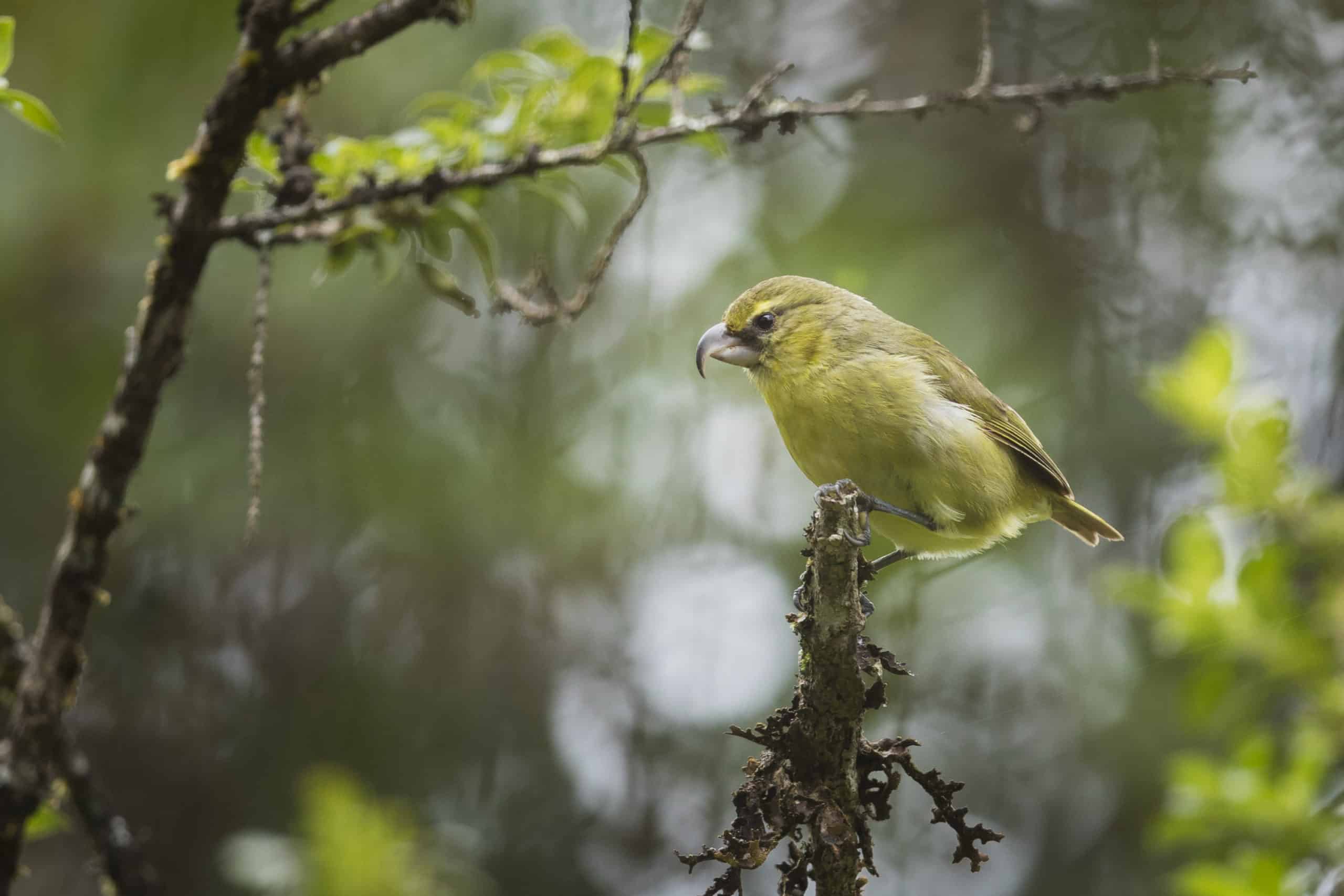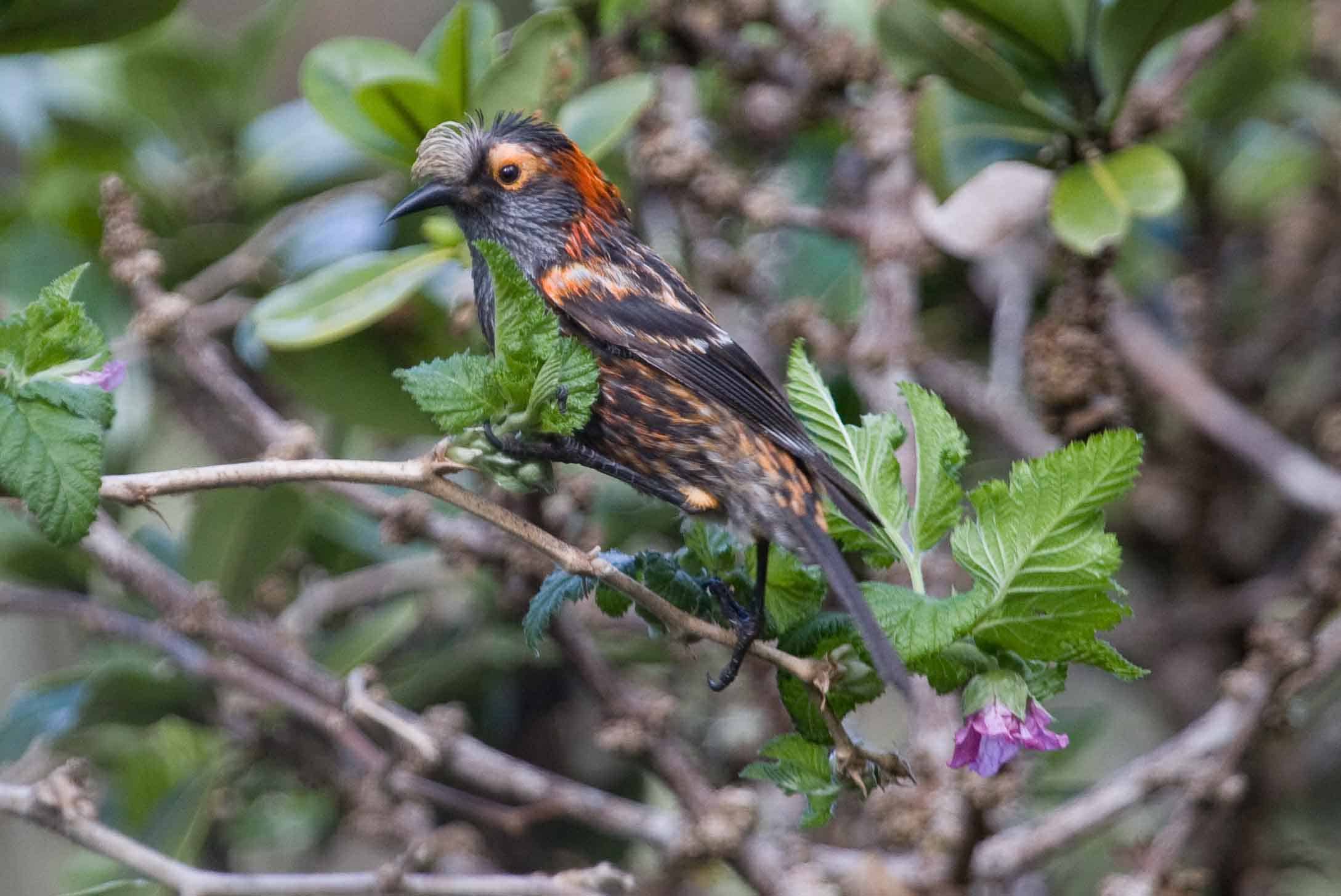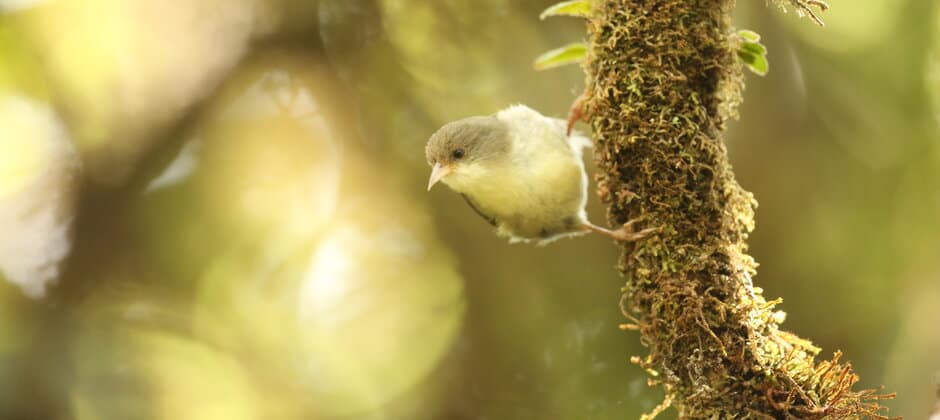Share this article
WSB: Extensive measures required to save Hawaiian birds from extinction
Mosquito control and captive breeding may be the only ways to save two Hawaiian bird species hurtling toward extinction on the island of Kauai.
Only a few dozen ‘akikiki (Oreomystis bairdi) live in the wild, and another 42 are in captivity. The U.S. Fish and Wildlife lists this species endemic to Kauai as endangered. The USFWS also considers the ‘akeke‘e (Loxops caeruleirostris) endangered, but its population is larger, with 600 left in the wild. However, ‘akeke‘e are dropping at a quicker pace than the ‘akikiki.
Both species’ populations have collapsed due to climate change and the spread of avian malaria on the island. Invasive southern house mosquitoes (Culex quinquefasciatus) were introduced in the early 1800s and avian malaria reached the island in the 1930s. The disease spread quickly through the lowland areas of the island. But at that time, the higher elevation areas were mostly unsuitable for the mosquitoes that spread the disease, leading to a degree of protection for birds like the ‘akikiki and the ‘akeke‘e.
But as climate change has led to warmer temperatures, even high elevation areas like Alaka’i Plateau on Kauai have become more suitable for these mosquitoes that sometimes carry malaria. That’s resulted in huge species losses, especially for birds like the ‘akikiki and the ‘akeke‘e the that were naïve to the malaria parasite.
“It’s been a long-term march toward extinction,” said TWS member Eben Paxton, a research ecologist with the U.S. Geological Survey’s Pacific Island Ecosystems Research Center.

The ‘akekeke is one of several honeycreepers close to extinction in the wild.
Credit: Lucas Behnke
In research published recently in the Wildlife Society Bulletin, he and his co-authors outlined conservation strategies to save these two species, and perhaps others affected by avian malaria.
One strategy is a form of mosquito control involving working with natural bacteria in mosquitoes called Wolbachia. The Wolbachia bacteria normally don’t cause issues for mosquitoes, but when two mosquitoes carrying two different strains of Wolbachia mate, the eggs are infertile.
Only one strain of Wolbachia is present among the southern house mosquitoes of Hawaii, so managers can introduce large numbers of male mosquitoes with another strain of the bacteria. Since male mosquitoes don’t feed on blood, they aren’t vectors of the disease. These insects would eventually mate with enough females to decrease mosquito prevalence, and by extension, avian malaria.
“If this does work, it has the potential to break the avian malaria disease cycle,” Paxton said. Congress has recently provided $6.5 million in funding for this operation through the Bipartisan Infrastructure Law. The situation is dire for these two species as well as others like the kiwikiu (Pseudonestor xanthophrys), another bird endemic to Hawaii listed as endangered by the USFWS whose numbers have been decimated by avian malaria.
“There’s a push to find the necessary money for demonstrations of this technique,” he said, adding they estimate the earliest the treatment could be applied would be by 2024.
Unfortunately, this funding is likely going to come too late for the ‘akikiki, whose numbers could be as low as 20 individuals in the wild.
Paxton said for this species, wildlife managers will try to capture all the individuals left in the wild and bring them into captivity. In fact, researchers have already had success after bringing a number of wild-harvested eggs into captivity in 2014-2015 that have since hatched and bred successfully in captivity. By causing their extirpation in the wild, they hope to save the species from complete extinction.
“Those are the kind of excruciating choices that decision-makers have to make,” Paxton said. “There is no clear and easy way forward.”

The kiwikiu is also vulnerable to avian malaria. Credit: Zach Pezzillo
But bringing the ‘akikiki into captivity would also create new problems, specifically how to have captive-bred birds successfully adapt to the wild after release. “The long-term goal is to return these birds back to the wild, which is a whole new set of challenges,” Paxton said.
The ‘akeke‘e, on the other hand, don’t do as well in captivity. The mosquito treatment solution may be the only chance these birds have. Luckily, their numbers in the wild are a little higher than their counterparts.
Just the same, the mosquito treatment is only a temporary solution. It’s unlikely wildlife managers would be able to eradicate the southern house mosquitoes from an entire Hawaiian island, especially at low elevations where the mosquitoes are abundant. They would need to continue to release male mosquitoes with the alternate Wolbachia bacteria to control the spread of malaria in high elevation areas as they became repopulated from lowlands, at least until some other solution is found.

Wildlife managers are exploring translocating some ʻākohekohe from Maui to Hawaii Island.
Credit: C. Robby Kohley
The two Kauai species and the kiwikiu aren’t the only ones that face problems. The Hawaiian Department of Land and Natural Resources put out a press release in April discussing the “grim prospects” of those three species as well as the ʻākohekohe (Palmeria dolei), or crested honeycreeper from avian malaria based on a USGS report released about those species. But habitat loss also affects all of these species.
Wildlife managers are also exploring the idea of translocating some of the latter species from Maui, where they’re endemic, to suitable habitats on Hawaii Island as an effort to stave off extinction.
As many as 11 more native Hawaiian forest birds are vulnerable to extinction as a result of avian malaria spreading into high elevation forests,” Paxton said. “The tools wildlife managers are developing now to save these three critically endangered species may provide the blueprint for successful management of more of Hawaii’s unique forest bird communities.”
This article features research that was published in a TWS peer-reviewed journal. Individual online access to all TWS journal articles is a benefit of membership. Join TWS now to read the latest in wildlife research.
Header Image: The ‘akikiki is down to a few dozen birds in the wild. Credit: Justin Hite








